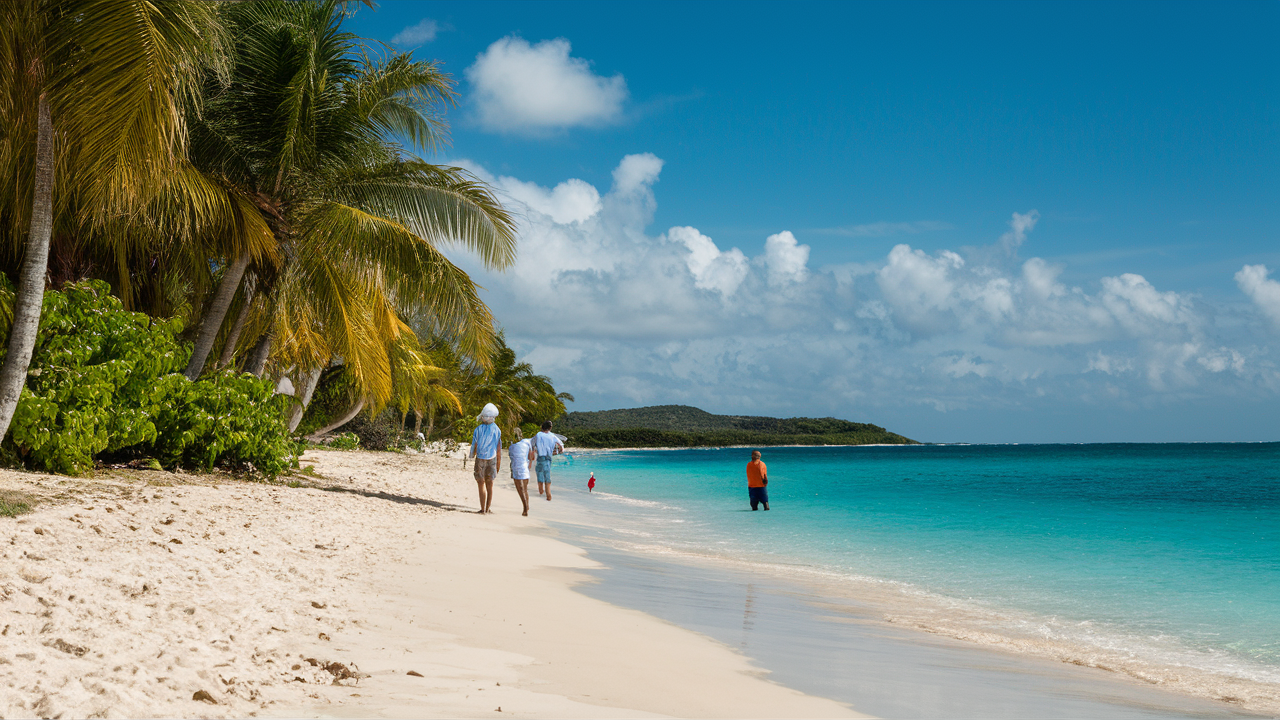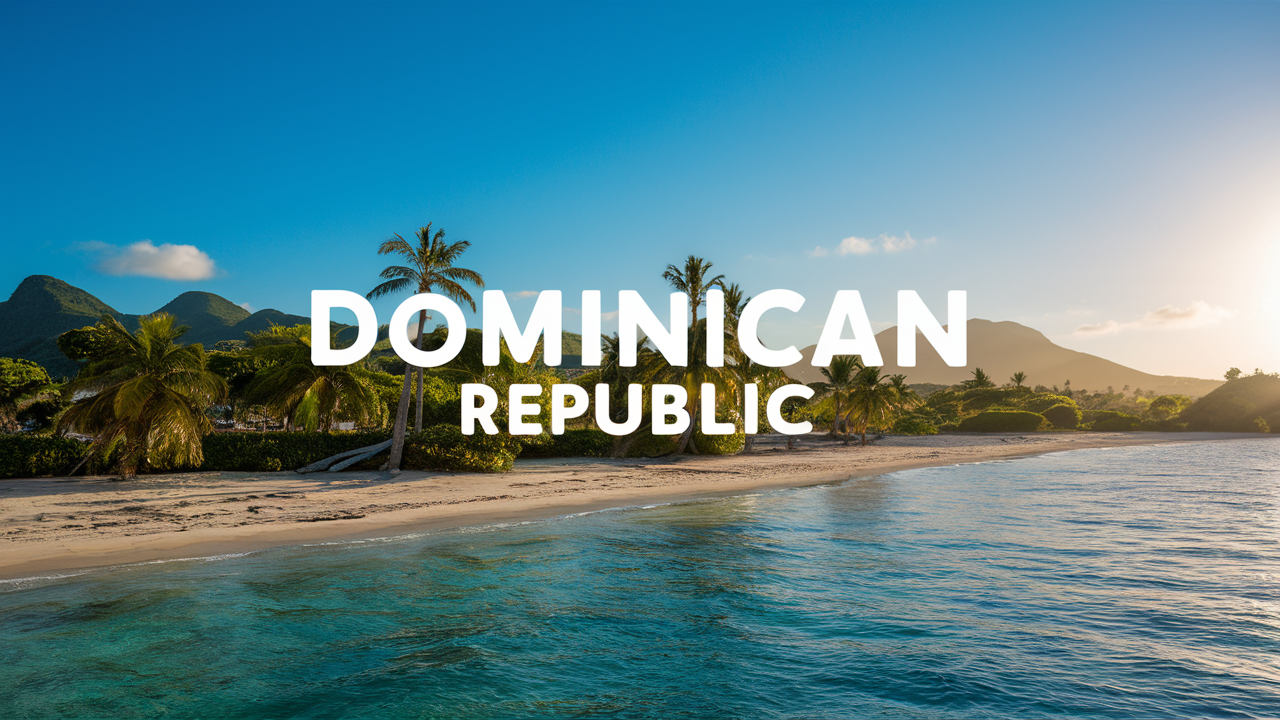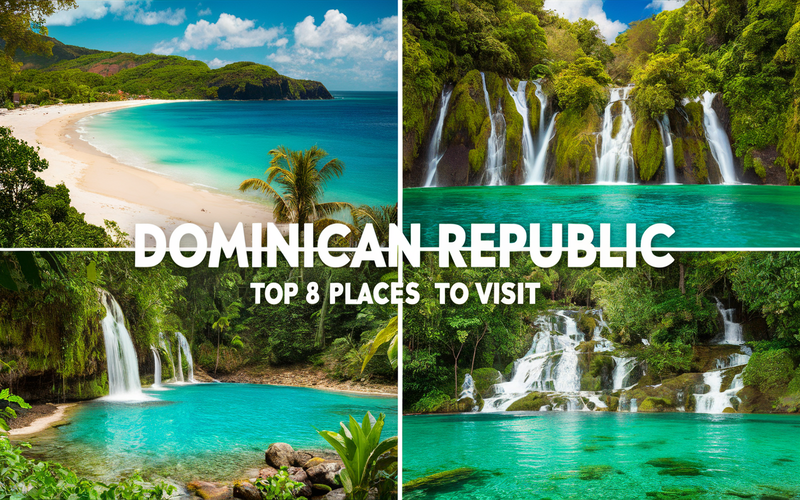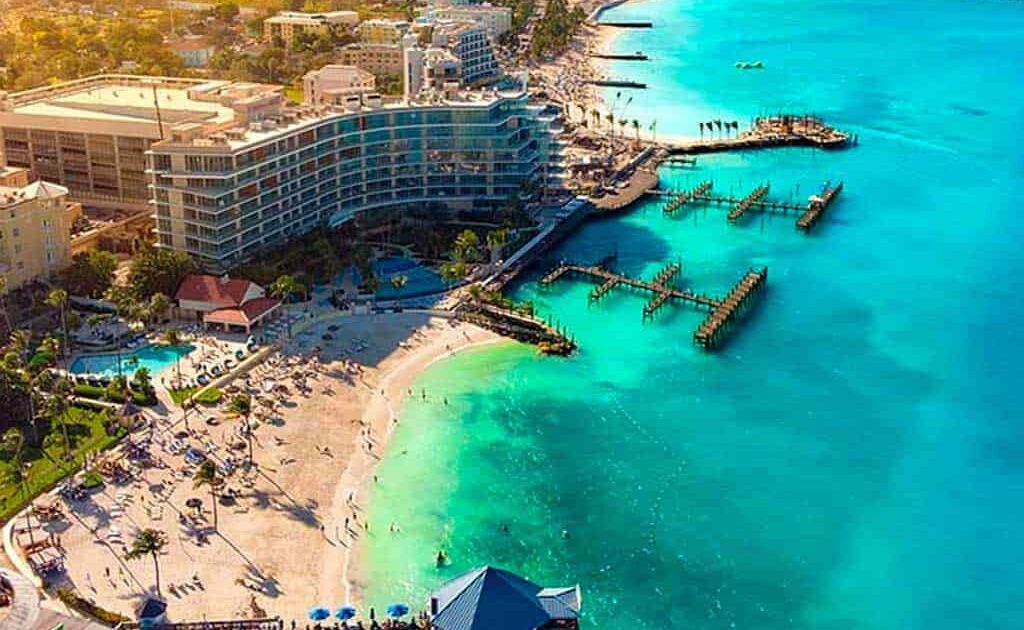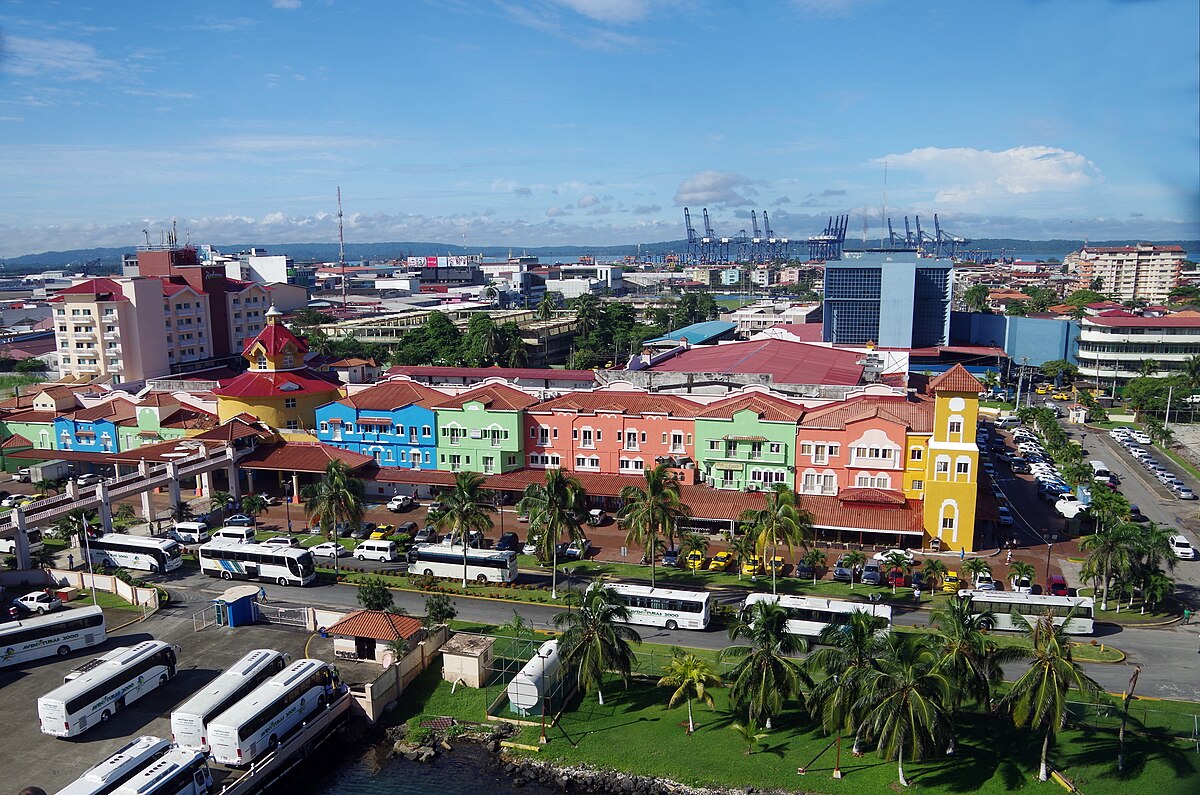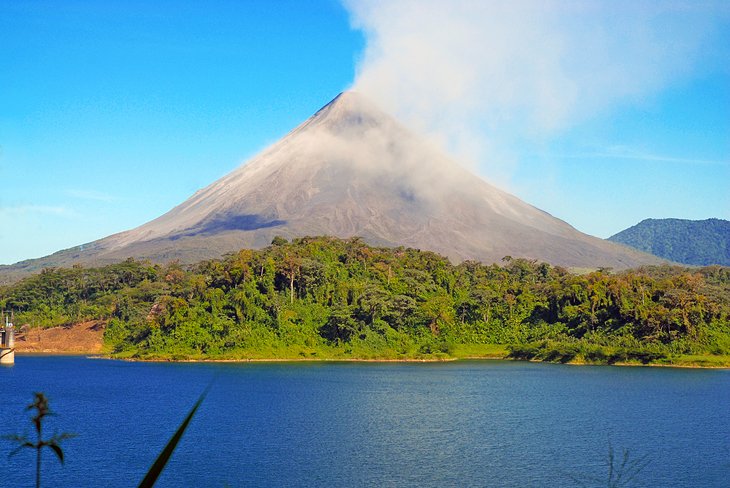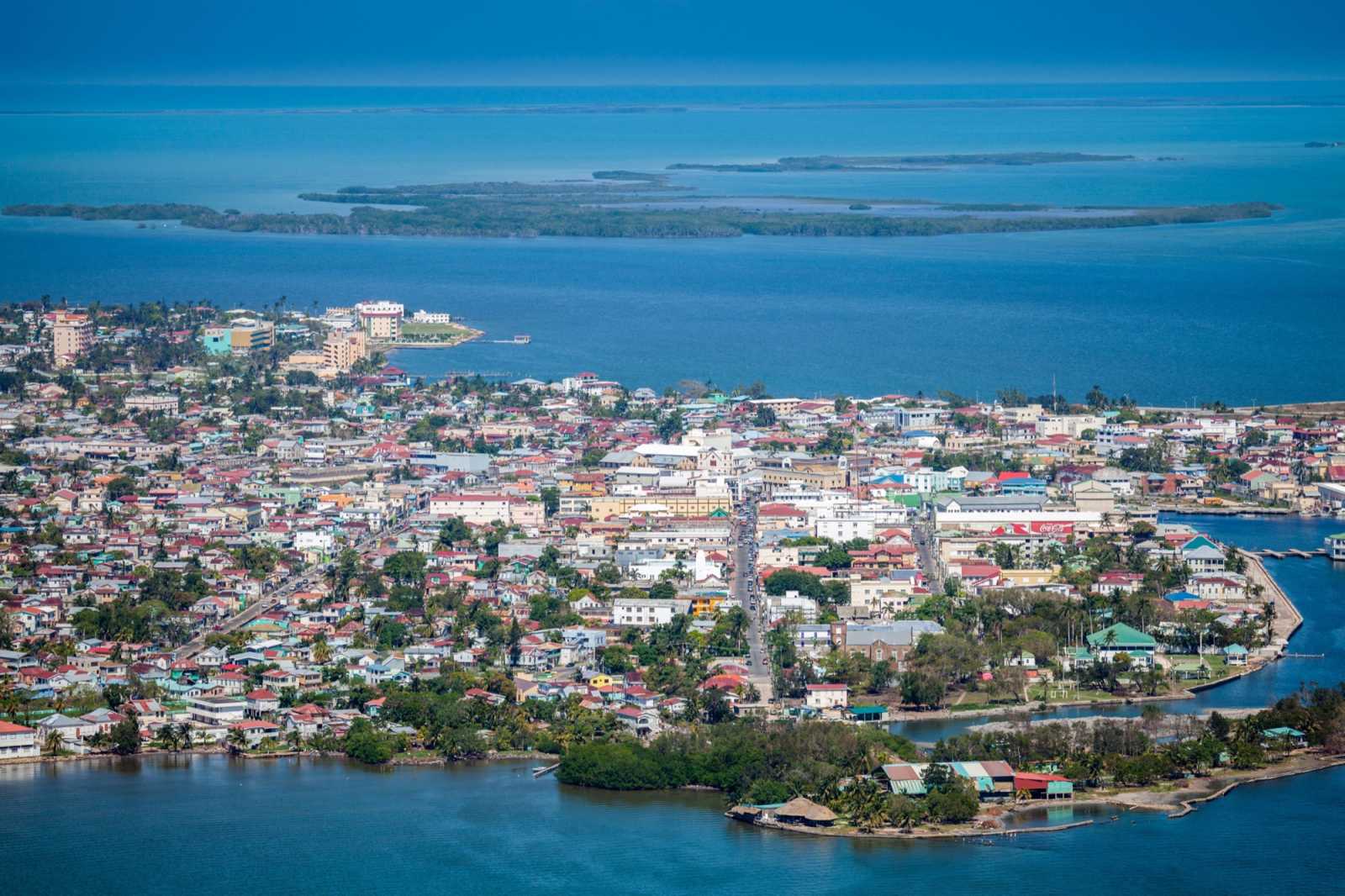Plan Your Travel To Dominican Republic
Dominican Republic Travel Essentials
Best Time: December to February Read More
"The Scandinavian gem"
Dominican Republic Tourism
A gem in the Caribbean, the Dominican Republic is a tropical paradise with immaculate beaches, beautiful jungles, and a lively culture. Santo Domingo, the capital, is a historical treasure that has the continent's earliest fortification and church. Discover the breathtaking highlands of Jarabacoa, the little settlement of Altos de Chavón, and the perfect Punta Cana shoreline. Mofongo, plantains, and fresh fish are staples of the national diet. The Dominican Republic extends a warm welcome to those who wish to take in the natural beauty, embrace the Caribbean way of life, and have an amazing island escape. There's also lively merengue music and rich customs. The DR entices tourists with a blend of "gingerbread" Victorian buildings and white-sand beaches. The nation of the Hispaniola Islands is a beach lover's dream come true with its nine hundred kilometers of Caribbean coastline. Take a day excursion to Puerto Plata to ride the cable car up Mount Isabel de Torres or visit Cabaret's nightlife and dance to the sounds of steel drums. Punta Cana's dazzling waves and breezy trees make it a veritable tropical paradise.
Must Know Before You Travel to Dominican Republic
- Language: Spanish is the official language, but English is widely spoken in tourist areas.
- Currency: The Dominican Peso (DOP) is the local currency, but US dollars are widely accepted.
- Weather: The country has a tropical climate, so pack light, breathable clothing, and sunscreen.
- Safety: While tourist areas are generally safe, be cautious with your belongings and avoid secluded areas at night.
- Local Cuisine: Try traditional dishes like mofongo and sancocho, and enjoy fresh seafood.
- Electricity: The standard voltage is 110V, and the outlets are Type A and B, so bring adapters if needed.
- Transportation: Taxis and public transportation are common; negotiate prices with taxi drivers.
- Cultural Etiquette: Greet people with a friendly "Hola" (Hello). It's customary to shake hands and use polite titles. Tipping is expected in restaurants and for services.
- Beach Safety: Pay attention to beach safety flags. The Dominican Republic has stunning beaches, but some areas may have strong currents. Follow lifeguard instructions and be cautious with water activities.
- Explore Nature: Discover the natural beauty of the Dominican Republic, from lush rainforests to pristine beaches. Consider exploring national parks, waterfalls, and ecological reserves.
- Cultural Festivals: Check for local festivals and events during your visit. Carnival is a major celebration with colorful parades, music, and dance. It's a great opportunity to experience Dominican culture.
-
Time Zone: The Dominican Republic operates on Atlantic Standard Time (AST), or UTC-4. Confirm the local time at your specific destination.
Tourist Places to Visit In Dominican Republic
Punta Cana

Dominican Republic Travel Packages
Compare quotes from upto 3 travel agents for free
View All Packages For Dominican republic
More on Dominican Republic Travel
All collections about Dominican republic
Best time to visit Dominican Republic
The best times to go to the Dominican Republic are December through February. Winter arrives in the nation during these months, making travel throughout the locations more comfortable. The greatest thing is that, despite the fact that it's referred to as the peak season, it won't be difficult for you to instantly secure a hotel room. Due to its consistently mild climate, the nation is a well-liked travel destination for people all over the world. It is well-liked by tourists because of the breathtaking beaches dotted with coconut trees, the surrounding tropical landscape, and the soft, warm saltwater. Summer temperatures, which run from May to July, vary from 25 to 28 degrees Celsius. This is when the weather grows hot and sticky. The Dominican Republic has an average of 2500 mm of rainfall during the rainy months of August and September, particularly in the mountainous areas. If you are travelling during these months, try to stay closer to the shore to escape such intense rain. Never forget that the Dominican Republic experiences a major storm every ten years due to its location in the middle of the Caribbean hurricane belt. Thus, the country's two main hurricane seasons are August and September. Known as the busiest time of year, it will not be difficult for you to instantly secure a hotel room. Due to its consistently mild climate, the nation is a well-liked travel destination for people all over the world. It is well-liked by tourists because of the breathtaking beaches dotted with coconut trees, the surrounding tropical landscape, and the soft, warm saltwater. Summer temperatures, which run from May to July, vary from 25 to 28 degrees Celsius. This is when the weather grows hot and muggy. The Dominican Republic has an average of 2500 mm of rainfall during the rainy months of August and September, particularly in the mountainous areas. If you are travelling during these months, try to stay closer to the shore to escape such intense rain. Never forget that the Dominican Republic experiences a major storm every ten years due to its location in the middle of the Caribbean hurricane belt. Thus, the country's two main hurricane seasons are August and September.
Top Stories about Dominican Republic Tourism
Read More on Dominican Republic Travel
Exchanging money in the Dominican Republic:
It's essential to comprehend the currency exchange procedure before travelling to the Dominican Republic. Although US dollars are commonly accepted, the official currency is the Dominican peso (DOP). It is essential to exchange some cash at better rates at neighbourhood exchange offices or banks. While most tourist destinations take credit cards, it's a good idea to have extra cash on hand for smaller sellers. There are several ATMs, so you may take out cash whenever you need it. Beware of potentially unfavourable exchange rates at hotels and airports. All things considered, using a combination of dollars and pesos will facilitate transactions when visiting this stunning Caribbean country.
Nightlife in the Dominican Republic:
The nightlife in the Dominican Republic is lively and varied. The vibrant nightlife scenes of Santo Domingo, Punta Cana, and Puerto Plata are well known. A variety of pubs, clubs, and beach parties may be found. The dance floors are dominated by bachata and merengue music, and the people are renowned for their kind demeanour. Don't miss Punta Cana's beachside clubs or Santo Domingo's bustling Malecon. Because certain places have dress codes, don't forget to dress up. The Dominican Republic has something to offer everyone, whether your preference is to dance the night away or simply relax with a drink on the beach.
Shopping in the Dominican Republic:
The Dominican Republic has a wide variety of shopping possibilities. Handmade jewellery, art, and crafts abound in the local markets and stores. Larimar is a rare blue stone that is exclusive to the Dominican Republic and makes a wonderful memento. Major cities like Santo Domingo and Punta Cana have upscale malls with designer products. Markets sometimes include haggling, so practice your negotiating techniques. Remember to check out the local markets for some wonderful rum, cigars, and spices. One of the most enjoyable ways to bring a bit of this lively culture home is to go shopping in the Dominican Republic.
Festivals in the Dominican Republic:
A country that understands how to have fun is the Dominican Republic. Carnival is one of the biggest celebrations, taking place in February. It's an amazing show with vibrant costumes, dancing, and music. Another well-known religious holiday in April is Semana Santa, or Holy Week, which features processions and rituals. Every year, bachata and merengue festivals take place to honour the nation's colourful dance and music customs. Local communities frequently display their own cultures through their festivals. One exciting and unique approach to fully experiencing the local way of life is to attend a festival in the Dominican Republic.
Hygiene in the Dominican Republic:
When travelling to the Dominican Republic, it is essential to maintain proper hygiene standards. It's advisable to stick to bottled water and stay away from ice in beverages at local restaurants, as tap water might not be safe to consume. Keep hand sanitiser with you for portable hygiene. Wash off seawater and sand when visiting the beach to avoid irritation to the skin. Since certain places are vulnerable to illnesses spread by mosquitoes, use insect repellent to protect yourself from them. Overall, maintaining basic hygiene will help guarantee a safe and pleasurable trip to this stunning Caribbean country. This includes frequent handwashing and the handling of food with care.
Tips for visiting the Dominican Republic:
1. Make sure to take into account these essential pointers for a successful trip to the Dominican Republic.
2. As not everyone speaks English, become familiar with some fundamental Spanish phrases. To shield oneself from the tropical heat, drink plenty of water and use sunscreen.
3. If you have a sensitive stomach, use caution while drinking tap water and stay away from street food.
4. When shopping in neighbourhood markets, haggle and be ready to work out a deal. Be kind to the welcoming inhabitants and observe the customs of the area.
5. It's important to stay safe; therefore, lock up your stuff and don't go on nighttime walks by yourself. You'll have a safe and enjoyable trip to this paradise in the Caribbean if you follow these suggestions.
Food of the Dominican Republic:
A delicious mix of African, Taino, and Spanish flavours may be found in Dominican cuisine. Basic foods like rice and beans are frequently served with stewed meats like hog, chicken, or goat. Plantains are a popular side dish that may be made in a variety of ways. Sample the fried green plantains, known as tostones, and the mashed plantain delicacy, mofongo. There's no shortage of seafood, with meals like "La Bandera" (The Flag) featuring rice, beans, and pork to resemble the colours of the Dominican flag. Sancocho is a filling soup, and for a fast snack, try the empanadas. With so many fresh fruit juices and tropical fruits like papaya and mango available, Dominican cuisine is a delectable sensory experience.
Photos of Dominican Republic
All Country Photos Dominican republic
Popular Questions And Answers on Dominican Republic
What is the best time to visit the Dominican Republic?
The best time to visit is from December to April, during the dry season, when the weather is pleasant and there's less chance of rain.
Do I need a visa to travel to the Dominican Republic?
Most tourists from the US, Canada, and many European countries don't need a visa for visits up to 30 days. Check your specific requirements before traveling.
What are the must-visit places in the Dominican Republic?
Don't miss Punta Cana, Santo Domingo, Puerto Plata, and the beautiful beaches of Bavaro, Punta Cana.
Is the Dominican Republic safe for tourists?
While the country is generally safe for tourists, it's essential to take standard precautions like avoiding remote areas at night and safeguarding your belongings.
What is the currency in the Dominican Republic?
The currency is the Dominican Peso (DOP), but US dollars are widely accepted in tourist areas.
What is the official language of the Dominican Republic?
Spanish is the official language, but English is spoken in most tourist areas.
What are some traditional Dominican dishes to try?
Sample dishes like mangu (mashed plantains), sancocho (stew), and tostones (fried green plantains) to experience the local cuisine.
Can I drink the tap water in the Dominican Republic?
It's generally safer to stick to bottled water to avoid potential stomach issues. Many hotels and restaurants also offer purified water.
What's the local transportation like in the Dominican Republic?
Public transportation can be a bit challenging for tourists. Taxis and private transportation are more convenient options for getting around.
Are there any cultural customs I should be aware of when visiting?
Respect for elders and politeness are highly valued. Dress modestly when visiting churches, and ask for permission before taking photos of locals.



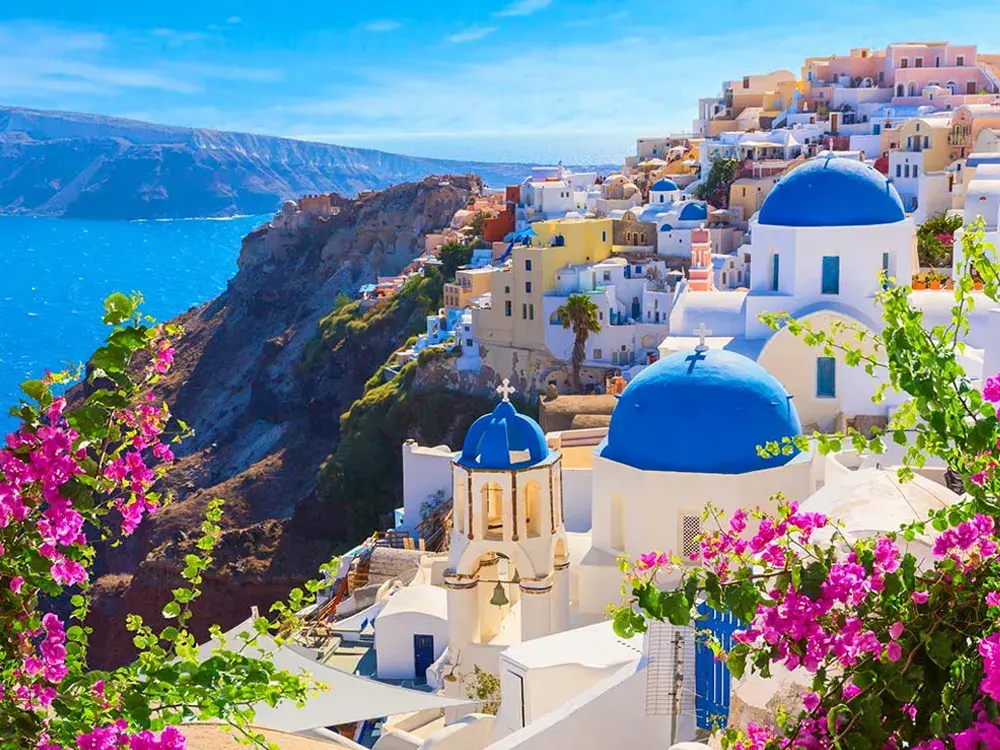

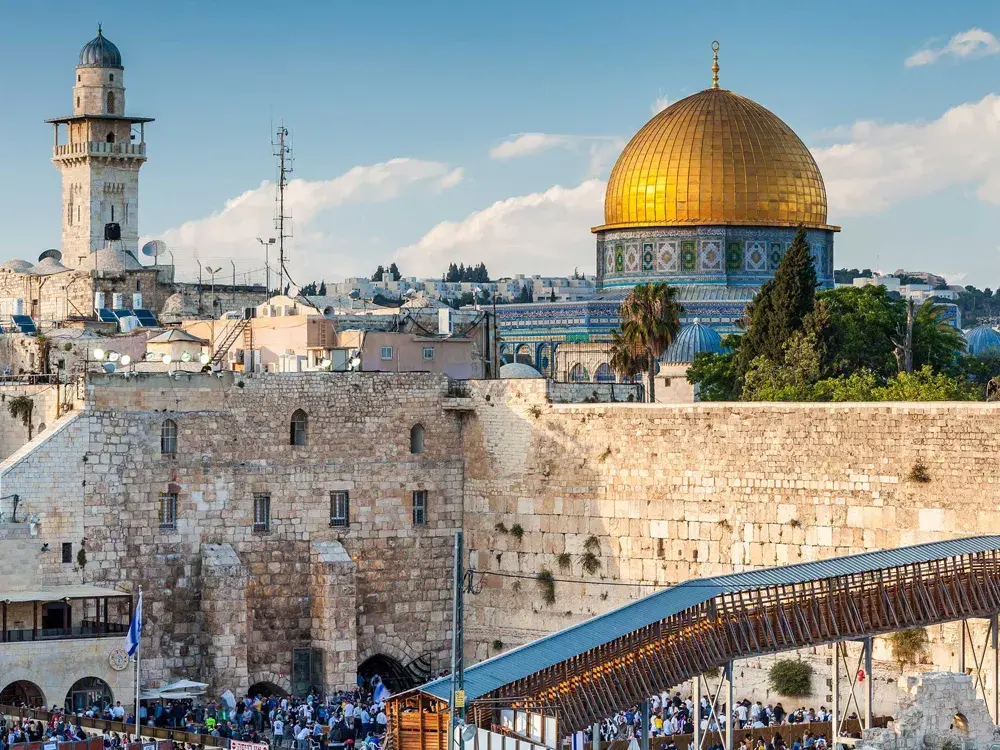
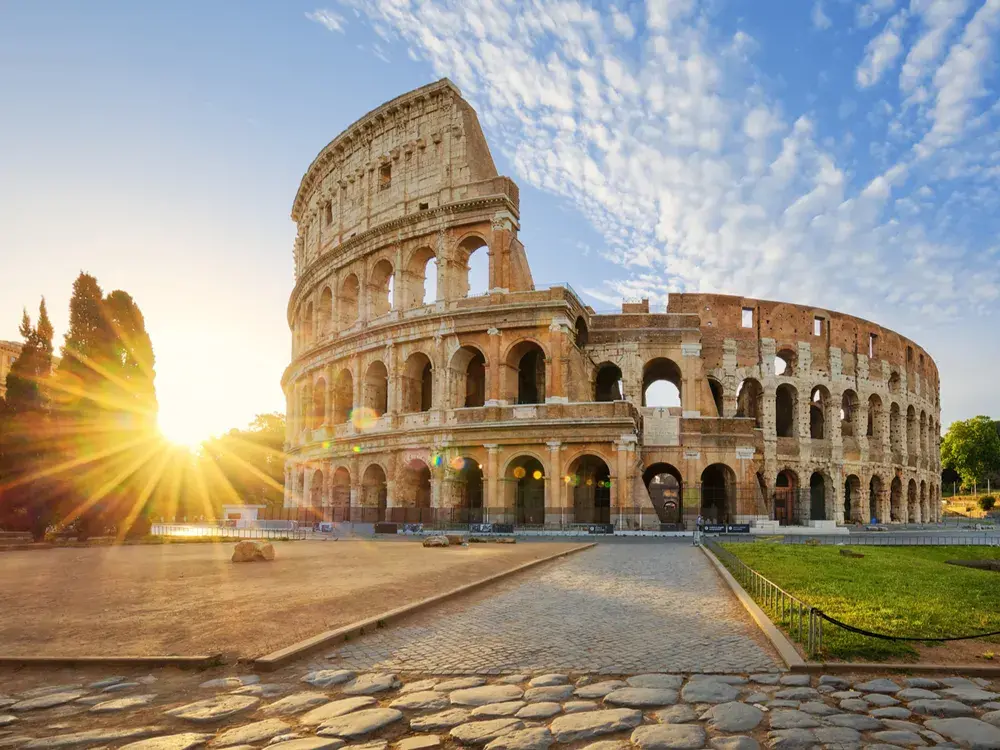
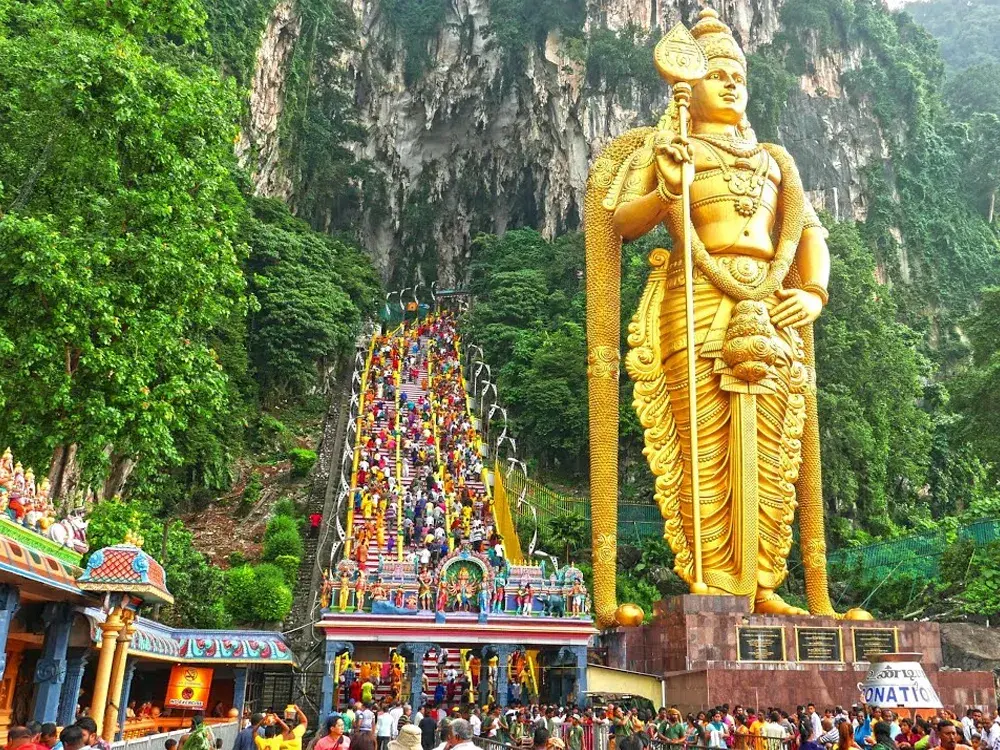
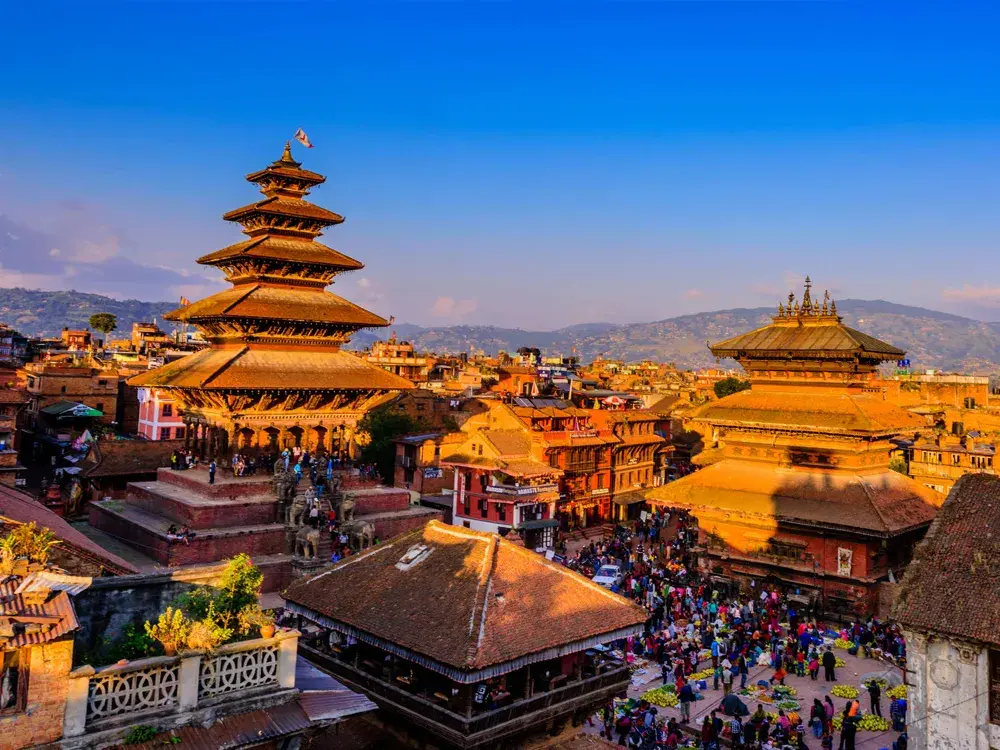
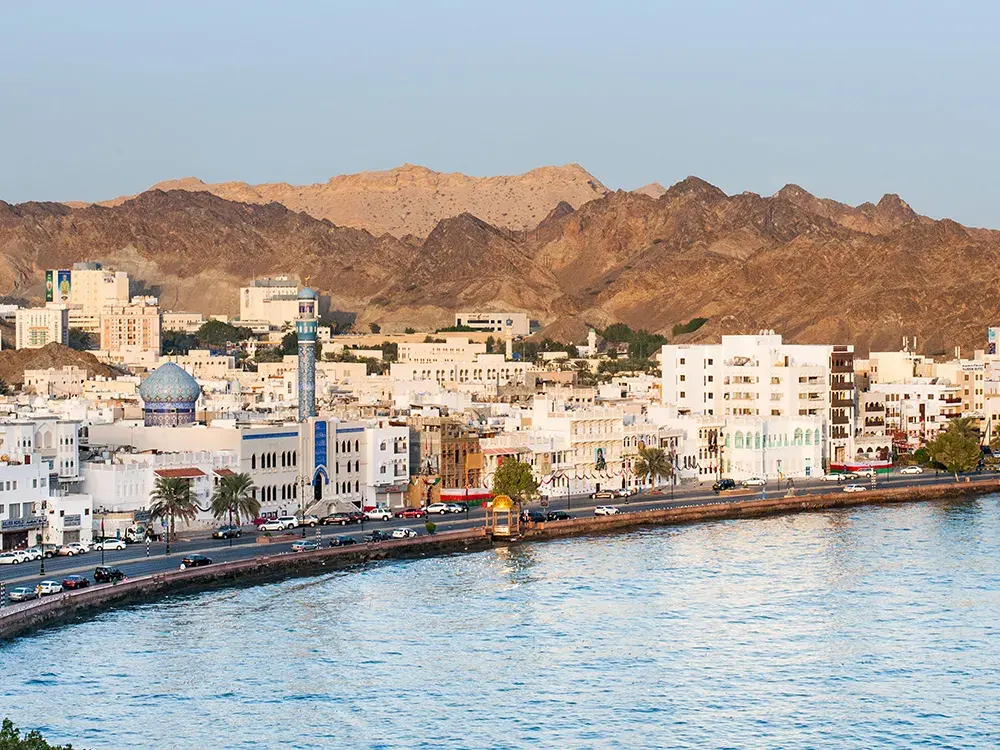
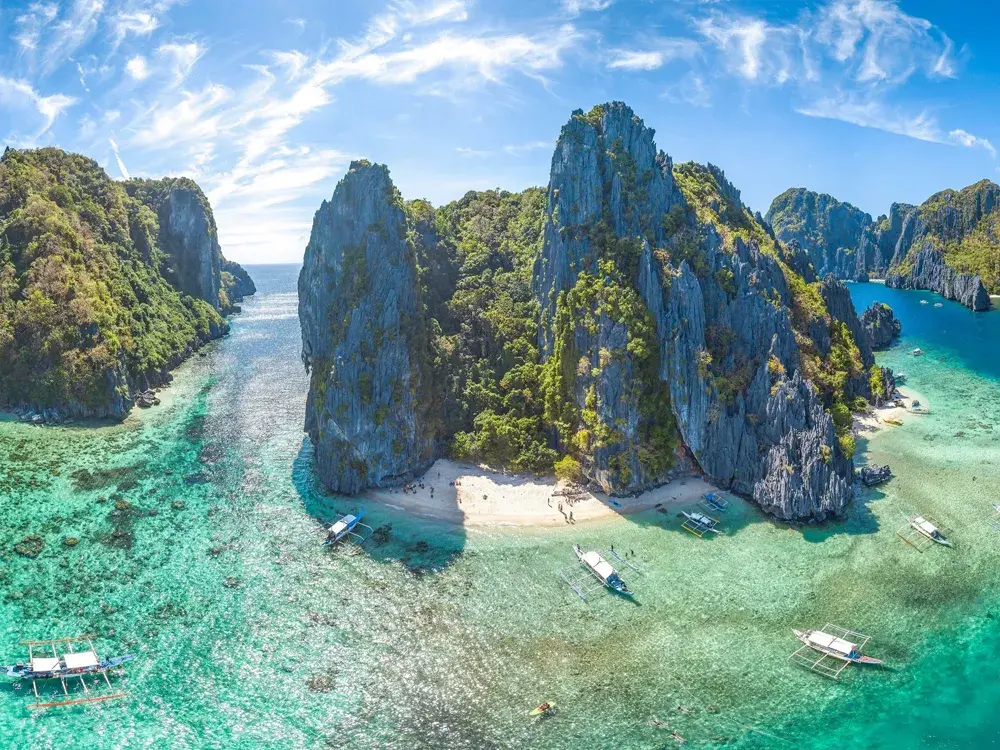


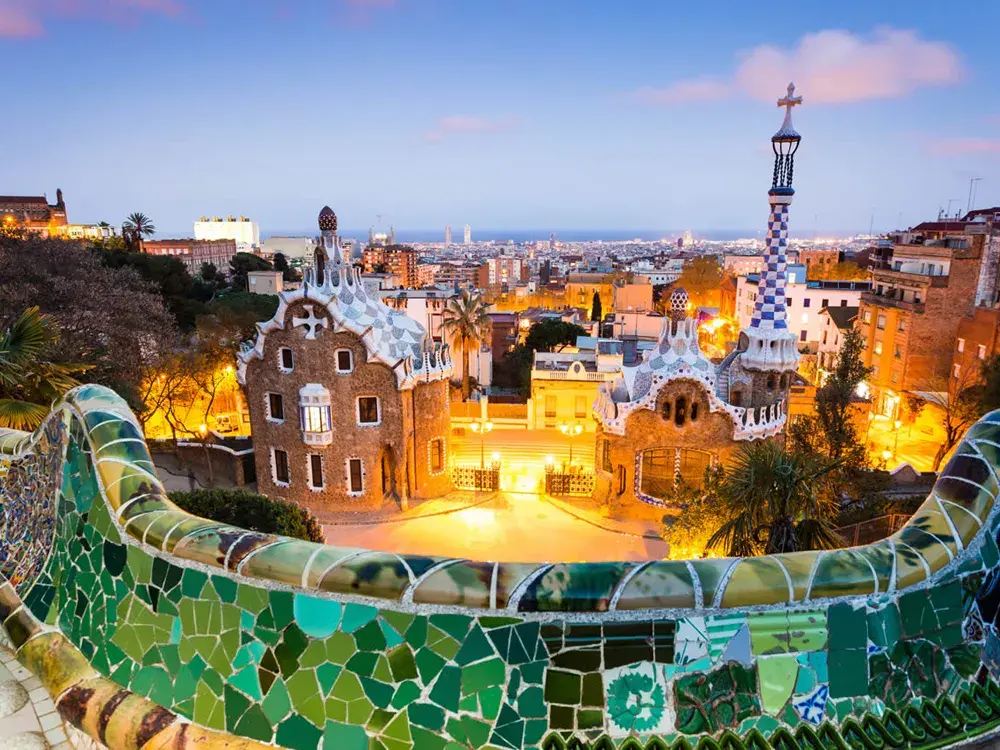

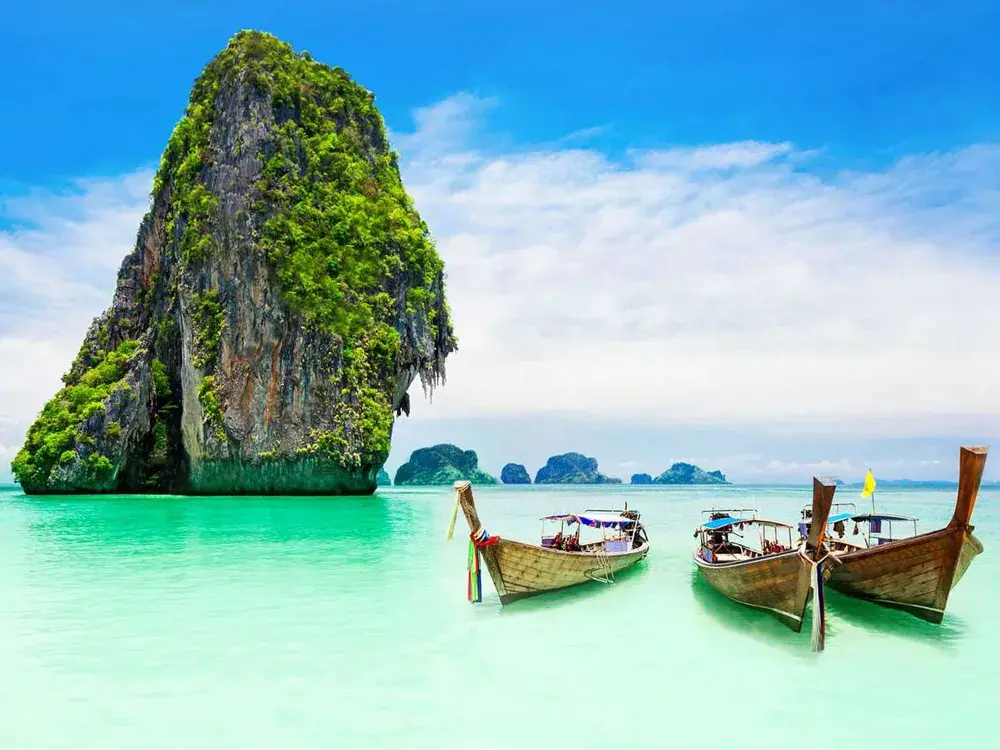

.webp)





